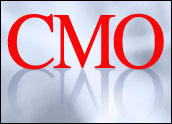
Chief marketing officers (CMOs) are given the unenviable, almost contradictory, task of catching marketing lightning in a bottle on a consistent basis. The problem is that turbulent economic conditions, like the ones we’ve experience recently, have historically stymied marketing innovation and forced CMOs to focus their budget on “tried-and-true” tactics rather than experimental ones.
Smart executives, however, do not have to compromise innovation in favor of short-term sales goals and building a cohesive long-term brand vision during unstable times. Social media has already demonstrated the ability to empower consumers to develop strong personal attachments and as a result has been a powerful tool for marketers looking to harness a mixture of applications, Web sites and viral videos to spread their brand message.
To make things easy, I’ve laid out that there are three major areas CMOs can address to sustain healthy levels of innovation during tough economic times: company culture, customer-focused metrics and multi-channel consistency.
Company Culture
The first step any CMO must take is to be open to the idea of innovation and be prepared to battle against internal “cultures of fear.” These cultures of fear are common today and represent any situation where a CMO is hesitant to act on a brilliant marketing idea or tactic based solely on the fact that it will likely be rejected by another department.
To overcome this hurdle CMOs need to clearly communicate their marketing campaigns’ goals and the metrics that will be used to evaluate their success. I worked with a brilliant executive at a leading financial institution whose morale was hanging by a thread because his company’s legal department would regularly shoot down his innovative marketing ideas. The key to his eventual success was to meet with his rival and learn the motivating factors behind their decisions. This discussion allowed him to create constructive dialog that helped him establish standards and expectations in which to balance creativity with conformity and ultimately pass the corporate litmus test.
Once CMOs establish relationships with people that are impeding innovation, executives can present previous successes to push for more freedom within the marketing department. When successful, additional resources can be dedicated to research and development (R&D) projects and experimental marketing practices. Ideally, I recommend CMOs devote as much as 15 percent of their media budgets to R&D, as this creates an environment where marketers are free to pursue potentially lucrative untried tactics without staying too far from the practices that fall into the traditional marketing bucket. For that 15 percent, the key to the success is to build in a margin of error for the evaluation metrics and to not view them based on short-term performance. Instead, multi-year plans — 1, 2, 3, 5 and 10 years — should be developed to establish long-term vision and commitment to these projects.
Customer-Focused Metrics
Now, while I just got finished discussing the importance of multi-year plans, the next item to keep in mind is long-term focus does not negate the importance of short-term goals — particularly in a troubled economy. In my experience, successful marketing executives implement and monitor quantifiable metrics that measure both the effectiveness of long- and short-term investments in securing customers’ buy-in to their brand’s promise.
To do this, CMOs must view themselves as customer advocates and be committed to that role. Today’s marketing executives can become so engrossed in the content planning and development strategy that they lose sight of their customers’ motivations for selecting their brand and why they return to it. While social media tools are great, smart CMOs must adopt tactics that make the most sense for their company (i.e. social media is not a one-size-fits-all approach). It’s always frustrating to see a global brand make a noble effort at integrating Web 2.0 tools into their marketing strategy only to find that they have only seven MySpace “friends.” MySpace and Facebook are an excellent way to create a forum for motivated customers to interact with your brand and one another but, without a quantifiable value on customers’ interest in a company, it is difficult to align the appropriate medium with a brand’s strengths.
The Internet, however, is not the only place to engage customers in conversation and contribute to customer happiness. Companies have increasingly, and rightfully I may add, followed their customers into the depths of cyberspace to try and create sales opportunities and engage them on a one-to-one basis. In the pursuit of customers on the digital cutting-edge, however, many companies overlook the customer call center as a channel that has been serving this same function for years. The call center is an excellent avenue to gather valuable insight into a brand’s pulse. Instead of de-emphasizing the call center, CMOs should seek to enhance their insight and influence into call center operations for the simple reason that incoming telephone inquiries represent opportunities for well-prepared corporate representatives to capitalize on enthusiasm, gather honest feedback or even diffuse anger if the need arises to help create short-term sales and long-term customer service value.
While customer happiness is a primary metric CMOs need to monitor closely, there are a number of others that also help evaluate the soul of a brand. These include an accurate measure of how much marketing is investing into each, the return they are getting on each investment, how many people-specific advertisements were served in each channel and the advertisements’ ability to inspire customers to act. With these metrics in hand, CMOs can adjust their strategies to better suit the campaign’s strengths and invite additional elements to contribute to its effectiveness. For instance, if a particular banner ad is eliciting a strong response on Google, the CMO may want to run the ad on Yahoo to see if they can capitalize on it or, if the ad doesn’t work, gain valuable insight into both search engines’ audiences.
Multi-Channel Marketing Consistency
I’ve found that the effectiveness of a campaign is often closely tied to a brand’s ability to create a consistent customer experience across all of its channels. Many companies unintentionally create internal silos between business units so one department is competing with another for a single customer’s mind share. Everyone at one time or another has been bombarded with multiple offers for a wide range of products and services from a single company and we have all had the same reaction — “Does this company really know what it’s doing?” CMOs need to act as or establish an authoritative office or committee to assist in the training and culture adjustment needed to solve this problem. Gathering all the relevant department heads into one room will help executives align individual branches with corporate goals to ensure the company delivers the cohesive message that prospects and customers demand.
The key to prolonged success in the current economic storm is to continually look for new ways to create meaningful customer experiences in both traditional and interactive media and to establish an innovative culture within the company and a strong commitment to these new channels. After all, these new marketing ideas do represent a surefire way for a brand now and in the future.
Joey Wilson is director of marketing strategy for Sapient, a global services firm that provides brand and marketing strategy, Web design, business and IT strategy, process and systems design, package implementation and custom development, as well as outsourcing services such as testing, maintenance and support.




































Social Media
See all Social Media